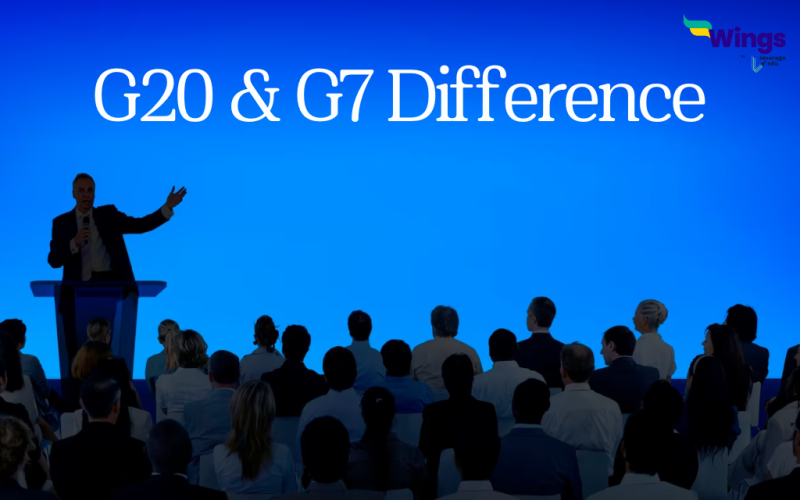The G20 and G7 are two of the most influential organizations in the world, bringing together the leaders of the world’s largest economies to discuss issues related to global economic growth, trade, and political stability. While the two groups may appear similar at first glance, several key differences between them are worth exploring.
This Blog Includes:
What is G20 Summit?
The G20 or Group of Twenty is a forum made up of 19 world’s largest economies plus the European Union. The member countries are Argentina, Australia, Brazil, Canada, China, France, Germany, India, Indonesia, Italy, Japan, Mexico, Russia, Saudi Arabia, South Africa, South Korea, Turkey, the United Kingdom, the United States and the European Union.
The G20 was created in 1999 in response to the financial crises of the late 1990s. The main purpose of the group is to provide a forum for the leaders of the world’s largest economies to coordinate their economic policies and address key issues related to global economic growth and stability. The G20 meets annually, with each member country taking turns hosting the summit.
Also, Read: Top 5 G20 Countries for Sports Management Courses
What Is G7 Summit?
The G7, or Group of Seven, is a forum made up of seven of the world’s most advanced economies: Canada, France, Germany, Italy, Japan, the United Kingdom, and the United States. The group was formed in 1975 as the G6 and later expanded to include Canada, becoming the G7 in 1976.
The main purpose of the G7 is to provide a platform for the leaders of the world’s most advanced economies to discuss key issues related to global economic growth and stability.
Also, Read: How Does G20 Affect Foreign Policy of Participating Countries
Key Differences Between G20 and G7
The differences between G20 and G7 can be based on different factors ranging from its formation, to how it functions and the basic structure of the summit.
Size and Membership
The most significant difference between the G7 and G20 is their size and membership. The G7 is a group of seven of the world’s most advanced economies, while the G20 is made up of 19 of the largest economies in the world, plus the European Union.
Representation
The G7 represents countries with a combined GDP of around $40 trillion, while the G20 represents countries with a combined GDP of around $85 trillion. This means that the G20 is a more representative group of the world’s economies, as it includes many emerging economies such as China, India, and Brazil.
Focus and Objectives
The G7 and G20 also have different focuses and objectives. The G7 is primarily concerned with issues related to global economic growth and stability, while the G20 has a broader mandate to address issues related to trade, development, and political stability.
Decision-Making Power
Another key difference between the G7 and G20 is the level of decision-making power each group has. The G7 has traditionally been seen as the more influential group, as it includes some of the world’s largest and most advanced economies. However, the G20 has become increasingly influential in recent years, as emerging economies such as China and India have grown in economic and political importance.
Also Read: G20 Countries with the Best Healthcare Facilities for International Students
In conclusion, the G20 and G7 are both important groups of leading global economies that hold regular meetings to discuss economic and financial issues, but they have some key differences. Comparatively, the G20 is seen as a more representative and inclusive forum, with a more structured decision-making process and a broader focus on global economic and social issues.
For more such updates about the G20 and Y20 Summit stay tuned to our page. Don’t forget to follow us on Instagram, Facebook, Twitter, and Linkedin.
 One app for all your study abroad needs
One app for all your study abroad needs















 60,000+ students trusted us with their dreams. Take the first step today!
60,000+ students trusted us with their dreams. Take the first step today!

